#Cultural Heritage site
Explore tagged Tumblr posts
Text





The places where stones have been known to move
#landscape#photographers on tumblr#original photographers#lensblr#nature#carnac#megaliths#neolithic#standing stones#cultural heritage site#2024#france#Bretagne
174 notes
·
View notes
Text
Upper Mustang Trekking and Tour in Nepal
Upper Mustang, a region in Nepal, has become an increasingly popular destination for travelers seeking unique experiences. Here are some key points for Upper Mustang Trekking and tour that make you to go:
Stunning Landscapes: The dramatic landscapes, including rugged mountains, deep valleys, and unique geological formations, create breathtaking views.
Rich Cultural Heritage: Upper Mustang is home to the ancient kingdom of Lo, with its distinct Tibetan culture, traditional monasteries, and festivals that reflect a unique way of life.
Historical Significance: The region has a rich history, with ancient caves and archaeological sites that date back centuries, offering insights into the area's past.
Trekking Adventures: With a variety of trekking routes, Upper Mustang appeals to adventure enthusiasts. The popular Annapurna Circuit and the Mustang Circuit provide challenging yet rewarding experiences.
Restricted Area Experience: Being a restricted region, Upper Mustang offers an exclusive feel, attracting those looking to explore off-the-beaten-path destinations.
Friendly Locals: The warm hospitality of the local people adds to the charm of the region, allowing visitors to engage with the community and learn about their customs.
Unique Flora and Fauna: The diverse ecosystems support various plant and animal species, including rare wildlife, making it a great destination for nature lovers.
Spiritual and Meditation Retreats: The serene environment and numerous monasteries make it an ideal place for spiritual seekers and those looking for meditation retreats.
Photography Opportunities: The unique landscapes and vibrant culture provide endless opportunities for stunning photography.
Authentic Tibetan Cuisine: Travelers can savor local dishes that reflect the Tibetan influence, adding a culinary adventure to their experience.
Upper Mustang offers a blend of adventure, culture, and natural beauty, making it a compelling destination for various types of travelers.
#nature#trekking#book photography#sunset#Annapurna Circuit Trek#Upper Mustang Trek#Upper Mustang Trekking#Cultural Experience#Monastery and Gumba#Cultural Heritage site#Restricted area experience#Lo manthang#Forbidden kingdom#Wall city in Nepal
0 notes
Text
In the weeks since Hamas' Oct. 7 attack, Israeli airstrikes on the Gaza Strip have killed more than 15,000 Palestinians, according to Gaza's health ministry, and destroyed thousands of homes in the territory.
And there have also been tremendous losses to the region's ancient and globally significant cultural heritage. The region was a hub for commerce and culture under Egyptian, Greek, Roman and Byzantine rule. It remained influential for centuries thereafter.
A recent survey by the group Heritage for Peace details the damage done so far to more than 100 of these landmarks in Gaza since the start of the present conflict.
The casualties include the Great Omari Mosque, one of the most important and ancient mosques in historical Palestine; the Church of Saint Porphyrius, thought to be the third oldest church in the entire world; a 2,000-year-old Roman cemetery in northern Gaza excavated only last year; and the Rafah Museum, a space in southern Gaza which was dedicated to teaching about the territory's long and multi-layered heritage — until it was hammered by airstrikes early on in the conflict. (...)
"If this heritage be no more in Gaza, it will be a big loss of the identity of the people in Gaza," said Isber Sabrine, president of Heritage for Peace, in an interview with NPR. (...)
"The people in Gaza, they have the right to keep and to save this heritage, to tell the history, the importance of this land," he said.
The 1954 Hague Convention, agreed to by Palestinians and Israelis, is supposed to safeguard landmarks from the ravages of war. But landmarks in Gaza have been destroyed by Israeli strikes in earlier rounds of fighting. Dozens of sites, including the now-obliterated Great Omari Mosque, suffered damage in 2014. A report by UNESCO, the United Nations body that designates and protects World Heritage sites, cites further destruction to cultural and historic sites in Gaza in 2021. (...)
Destruction of historical sites and other cultural sites is part of genocide, it's the destruction of the proof of a people's relationship to the land and a horrible emotional blow at the community. UNESCO must act immediately against Israel's destruction of Palestinian heritage, and every country and international organism must expel Israel and impose sanctions to make the genocide and apartheid end.
#💬#palestine#gaza#israel#free palestine#world heritage#cultural heritage#historical sites#archaeology#cultures
2K notes
·
View notes
Text
Hadrian's Wall
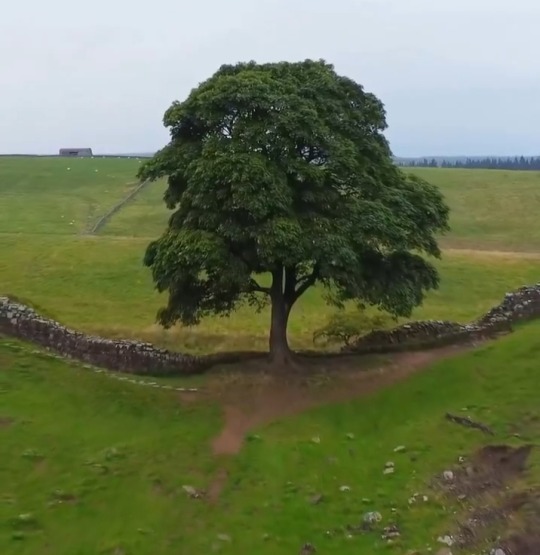
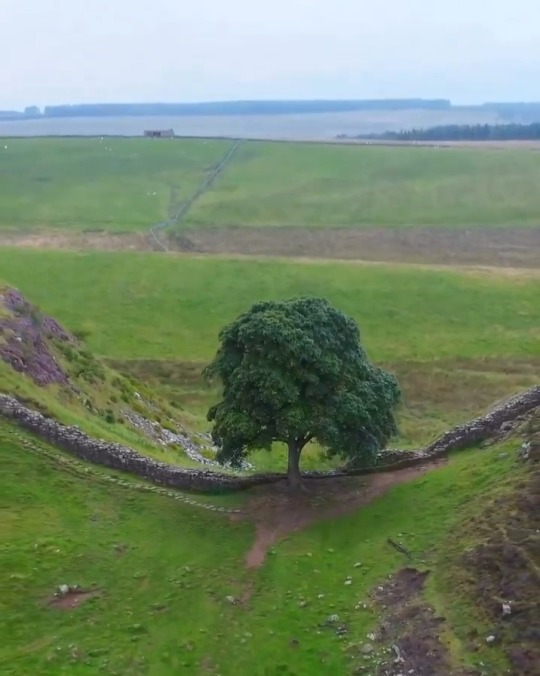
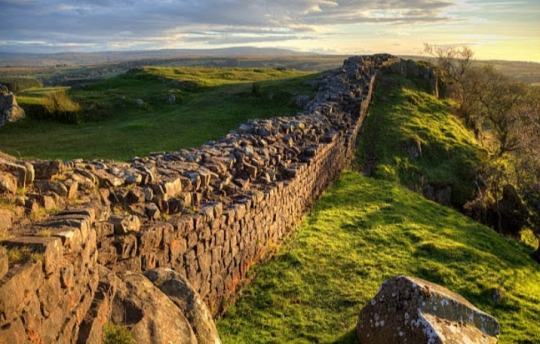
Hadrian's Wall is an impressive masterpiece of military engineering built along steep ups and downs that cross space and history between England and Scotland.
The old wall, sculpted for almost 2000 years by wind and rain, climbs over hills, immerses itself in a moor to suddenly resurface among the blades of light of a wood, a karst presence that seems to absorb the energy of landscape to challenge its gravity and logic in a rollercoaster of harsh ups and downs that cross space and history.
Hadrian's Wall is no longer England but it is not yet Scotland, even if the land to the north seems wilder.
But perhaps it is just a state of mind of those who look at it, subtly altered by the emotion of treading the same stones on which the Roman legionaries walked.
In reality, unlike what many believe, the Wall is within English territory, even if it has helped define the borders of the two countries since the emperor from whom it takes its name ordered its construction in 122 AD to "separate the Romans from the barbarians," the hostile tribes of the Picts who populated today's Scotland, a tough nut to crack even for the Roman legions.
To build it in just six years, about fifteen thousand men were employed, three legions that faced the challenges of a terrain carefully chosen to exploit its advantages.
The result is an impressive masterpiece of military engineering, a UNESCO World Heritage Site since 1987, stretching from one coast of England to the other for eighty Roman miles, about one hundred and seventeen kilometers from Solway Firth to the west and Wallsend to the east.
It is one of the many place names linked to its existence and then extending southwards with ports and coastal fortifications.
For nearly three centuries, Hadrian's Wall was northernmost and most fortified boundary of the Roman limes, a gigantic defensive system that stretched for over five thousand kilometres — from the Atlantic coast of Great Britain to the Black Sea across Europe — then continuing through present-day Middle East to Red Sea and from there cutting across North Africa to the Atlantic.
The 117km long (80 Roman miles) Hadrian's Wall was punctuated by 14 main forts, 80 minor ones and 2 watchtowers every third of a mile.
In addition to the actual wall, mainly made of stone, about 5m high and up to 3m thick, becoming six metres thick in the earthen sections, the Wall was reinforced by a ditch bristling with pointed stakes, a military road that connected the forts and allowed any point to be reached quickly and by a deep embankment, the Vallum.
The forts, rectangular in plan, varied in size according to the importance of the garrison, a pattern repeated with slight differences along the entire limes that protected the borders of the empire.
A moat and a wall punctuated by towers protected the perimeter and each side had a gate protected by two massive towers.
Inside were the headquarters — the praetorium where the praefectus castrorum reside; barracks; a hospital; warehouses and latrines, generally under the walls, while the bathrooms were outside the fortifications.
In granary, food supplies were stored to face the harsh winters or possible sieges.
In the Vicus, the civilian settlement, lived the families of the soldiers, often auxiliaries who officially could not marry.
In these villages that grew spontaneously around the forts, merchants, artisans and prostitutes also lived, attracted by the soldiers' wages.
There were also temples dedicated to Roman, local and even oriental deities that reflected the different religions of soldiers from all over the empire because Romans were very tolerant as long as the social order and the emperor were not questioned.
🎥: © pindropandhop via IG
#Hadrian's Wall#England#Scotland#Emperor Hadrian#Britannia#defensive fortification #stonewall#UNESCO World Heritage Site #British cultural icon#military engineering
85 notes
·
View notes
Text

ive been thinkin a lot lately about how long ive been on this site and it sorta feels like this
#my first tumblr contribution of 2025#being an ancient tumblrite is torture#bucky#bucky barnes#james buchanan barnes#the winter soldier#winter soldier#captain america#mcu#marvel#tumblr heritage#tumblr history#tumblr culture#this site is hell
32 notes
·
View notes
Text
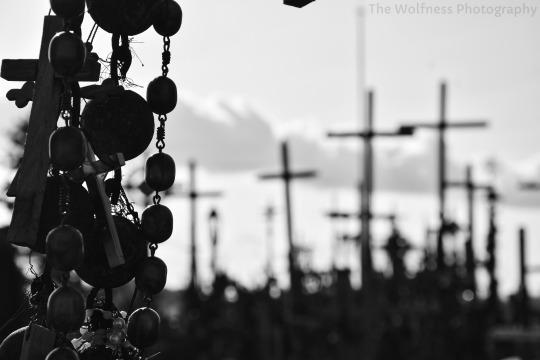


Hill of Crosses
Lithuania
#landscape#landscape photography#black and white#black and white photography#bw#bw photography#crucifix#crucifixes#cultural heritage#hill#pilgrimage site#religious#religious site#cross#crosses#statues#unesco#unesco world heritage#unesco site#interesting perspective#photographer on tumblr#original photography#original photographers#original photography on tumblr#Kryžių kalnas#Kryziu kalnas#Hill of Crosses#Šiauliai#Lithuania#Lietuva
135 notes
·
View notes
Text


MINERVA's Head: Roman copy of a Greek original 1 - 2 AD Greek medium-grained white marble Found at the Brixia Forum area From Brixia Capitolium "..discovered in the area during the 19th century excavations.. would originally have had helmet[s] [perhaps in bronze].. not survived." [txt ©BAP]
Brixia Archaeological Park in Brescia | BAP
Web: https://www.bresciamusei.com/en/museums-and-venues/brixia-roman-archaeological-area
IG, X : @ BresciaMusei
FB : https://www.facebook.com/bresciamusei
BAP | Michael Svetbird phs©msp | 04|05|24 6300X4200 600 [II.] The photographed object is collection item of BAP, photos are copyrighted [Non-commercial fair use | No AI | Author rights apply | Sorry for the watermarks]
📸 Part of the "HEADS.Sculpture" MSP Online Photo-gallery:
👉 D-ART: https://www.deviantart.com/svetbird1234/gallery/78520831/heads-sculpture
👉 FB Album: https://www.facebook.com/media/set/?set=a.1400262423675664&type=3
#brescia#brixia#archaeological site#archaeological museum#archaeology#antiquity#ancient#sculpture#head#heads#photo gallery#ancient sculpture#roman#greek#heritage#culture#art history#museums#museology#mythology#antiquites#minerva#goddess#ancient world#museum photography#archaeology photography#art photography#sculpture photography#photojournalism#michaelsvetbird
43 notes
·
View notes
Text
Lupin III p2e26 “A Rose and a Pistol/Shot Through the Heart” has everything:
“I call ’em ‘Zeni-GOTCHAs!’”
Bisexual lighting, appropriate for:
Jigen's terrible taste in women + live Lupin reaction
LupGoe intricate rituals
LupGoe mutually not immune to Fujiko
“You told me there would be a Japanese restaurant in Barcelona 😤”
A finale Cowboy Bebop 100% cribbed from (JigLup intricate rituals)
Sick rose petal/muleta match cut
LoopZoop intricate rituals
So much music from Carmen
#lupin also just. never rescues fujiko from her captors in this ep. to me this is part of the greater fujilup intricate rituals#(in my head she easily escaped once she got bored waiting for lupin to come do something silly. he knew she could this and he loves her.)#(she probably sprung herself in time to watch two of her weed-smoking bfs duel at a cultural heritage site. it's free dinner theatre)#lupin iii
18 notes
·
View notes
Text


Mare de Déu de la Roca hermitage in Mont-roig del Camp (Camp de Tarragona, Catalonia).
According to the belief, the hermitage was built in the place where a shepherd had found a statue of the Virgin Mary under a palm tree. The earliest written document that testifies there was a shrine on this site dates from 1230, next to a feudal castle that has not survived the passage of time. However, almost all the building that is still standing nowadays was built between the 1500s and the 1700s. The hermitage has been attacked in various wars, most brutally by the French army in the Napoleonic invasion of 1811, and needed to be partially rebuilt after that. The hermitage's library, as well as the wooden statue of the Virgin Mary that was worshipped here (probably made in the 1700s), were burned down in 1936, during the Spanish Civil War.
Photos from Turisme Mont-roig del Camp and fer55/Wikimedia Commons. Info: Diputació de Tarragona.
#mont-roig del camp#catalunya#fotografia#catalonia#europe#travel#wanderlust#travel photography#shrine#hermitage#places of worship#church#1500s#1600s#1700s#historical sites#cultural heritage#earth#places#landscape#mountains
17 notes
·
View notes
Link
Europe's castles are more than stunning architecture; they're portals to history, each with tales of royalty, intrigue, and cultural heritage. Whether you're wandering through the fairy-tale spires of Neuschwanstein or exploring the storied halls of Edinburgh Castle, these majestic structures offer breathtaking views and unforgettable experiences.
Traveling through Europe's enchanting castles promises not just beautiful photography moments but also a deeper appreciation of the past. To make the most of your castle-hopping adventure, research each site, consider guided tours, and embrace the unique stories behind them. From seasonal events to spectacular landscapes, there’s always something magical waiting to be discovered.
So, pack your comfy shoes and your curiosity, and get ready to uncover the magnificent history that these iconic landmarks hold!
#Europe#castles#travel#architecture#history#cultural heritage#Neuschwanstein#Edinburgh Castle#photography#adventure#tourism#guideds tours#fairy-tale#landmarks#historic sites#explore
4 notes
·
View notes
Text

#landscape#photographers on tumblr#original photographers#lensblr#nature#carnac#megaliths#neolithic#standing stones#cultural heritage site#2024#france#Bretagne
163 notes
·
View notes
Text











The first Swiss Federal Council was elected on November 6, 1848.
#first Swiss Federal Council#elected#6 November 1848#Bundeshaus#Bern#Bundesplatz#Federal Palace of Switzerland#architecture#day trip#cityscape#landmark#tourist attraction#Cultural World Heritage Site#Hans Wilhelm Auer#Bundesplatz 3#anniversary#Swiss history#Switzerland#Schweiz#original photography#River Aare#fall 2019#spring 2009
3 notes
·
View notes
Text

'Al Ula Stars' Storyboard
#alula#saudi#arabia#heritage#site#culture#desert#rangers#storyboard#film#movie#illustration#misschatz#artist#freelance#drawing#freelancer#illustrator#artwork
5 notes
·
View notes
Text
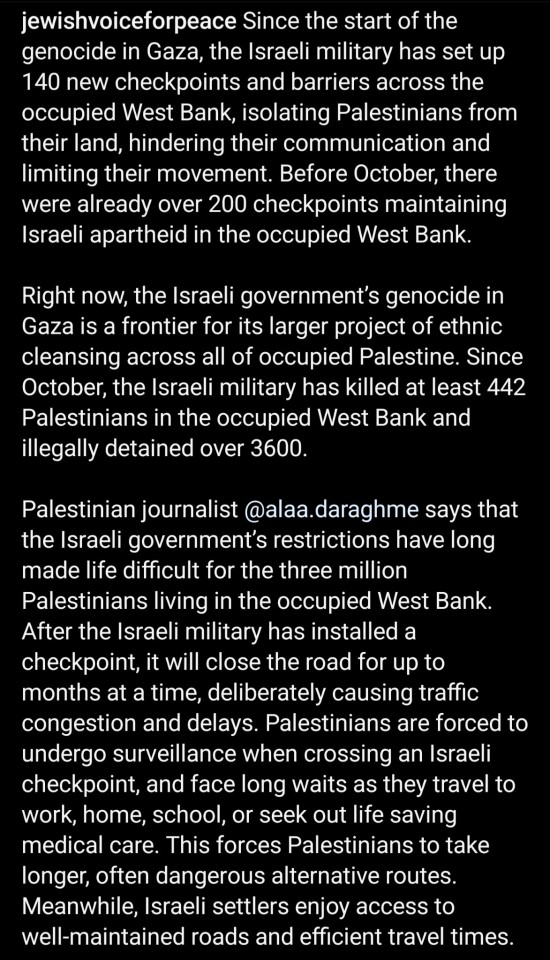

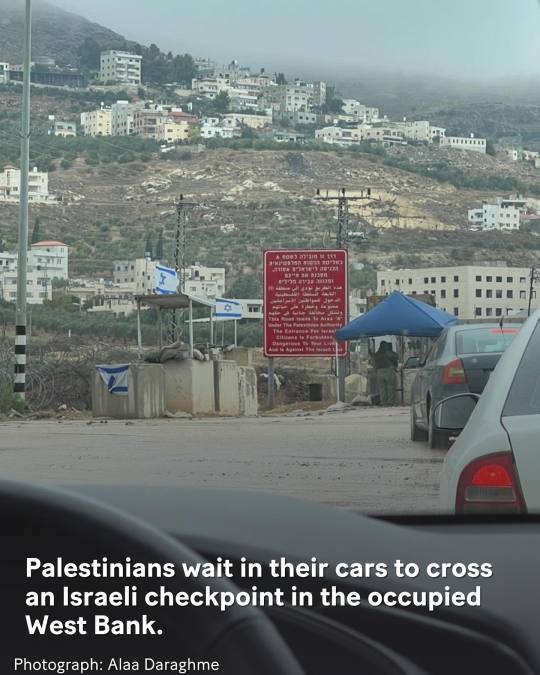



Literally undermining Al Aqsa & now blocking Muslims from accessing the mosque during Ramadan, refusing Christians and Catholics access to church for Palm Sunday (and likely Easter as well) and no one makes a peep. The smallest of the 3 religions that hold Jerusalem sacred are in control by military force and no one sees a problem? I feel like I'm in the Twilight Zone sometimes.
#ramadan#checkpoints#palm sunday#easter#jerusalem#al aqsa mosque#undermining#cultural and religious destruction#apartheid#save palestine#ethnic cleansing#israel is an apartheid state#seek truth#free palestine 🇵🇸#genocide#illegal occupation#israel is committing genocide#israeli war crimes#stolen land#stolen heritage#sacred site#Jerusalem#temple mount#west bank#jewish voices for peace#spread awareness#share#save al aqsa#israel is a terrorist state#intentional destruction of religious sites makes Israel no better than Isis
7 notes
·
View notes
Text
Breaking Down the Evolution of Hip-Hop Dance
Introduction: Hip-hop dance has become a global phenomenon, captivating audiences with its infectious energy and creativity. From its roots in the streets of New York City to its influence on mainstream culture, hip-hop dance has undergone a remarkable evolution over the decades. In this article, we will explore the history and evolution of hip-hop dance, from its humble beginnings to its current…
#Breaking#Contemporary art trends#cultural heritage sites#Dance#digital art techniques#Evolution#evolution of dance styles#famous art museums#HipHop#history of modern art#how to appreciate classical music.#impact of art on society#influential artists of the 21st century#popular cultural festivals#significance of folklore in culture#street art and graffiti#traditional cultural practices#traditional music from around the world#understanding abstract art
4 notes
·
View notes
Text

Locations: Machu Picchu
Few romances can ever surpass that of the granite citadel on top of the beetling precipices of Machu Picchu, the crown of Inca Land.
#machu picchu#the andes#peru#Incan culture#Incan civilization#ancient culture#ancient city#world heritage site#World heritage#archaeology#History#cultures#culture#travel the world#travel aesthetic#travel moodboard#travel#travel more#Place aesthetic#Place moodboard#location aesthetic#Location moodboard#Places#locations#moodboard#aesthetic#Hiram Bingham
30 notes
·
View notes